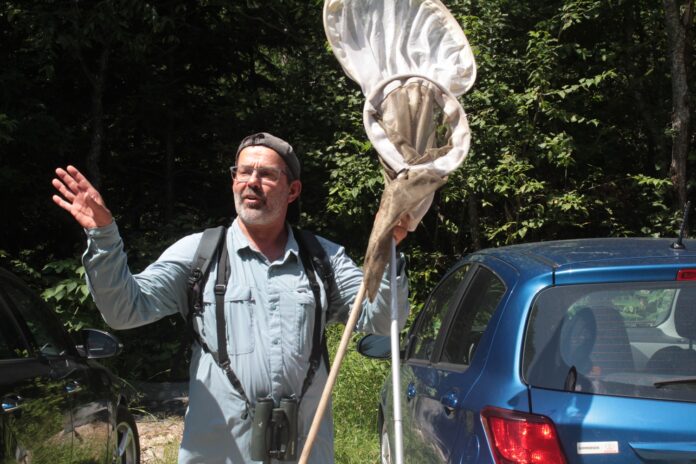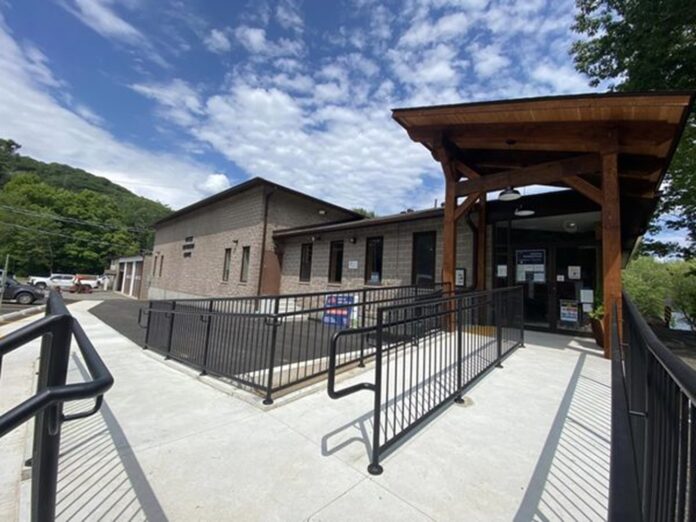Minden resident Les Wilson says the addition of computed tomography (CT) services at the Haliburton hospital is “life-changing” for many Highlanders.
He was one of the first patients to receive a scan in the recently-remodeled space housing CT – down the hall from the Haliburton emergency department. Tests began July 9, with Gail Kennedy, integrated director of diagnostics at Ross Memorial Hospital in Lindsay – who is assisting with CT start-up at HHHS – estimating there will be about 20 pre-booked procedures daily, with the machine also available for emergencies.
Wilson was there July 15 for a scan on his abdomen and said it was one of the best experiences he’s had at a hospital.
“It was amazing – I was in and out in 20 minutes,” Wilson said. “I have a hernia that needs fixing, they took great care with me, explained what they were going to do. I wasn’t sitting in a waiting room forever. I’ve been to lots of hospitals over the years for lots of different things, but this was the first time I thought ‘wow’ when leaving.”
No stranger to injury, Wilson estimates he’s had about a dozen CT scans over the years. All of them involved lengthy road trips to hospitals in Lindsay or Peterborough.
Usually, he’d have to take a full day off work, with travel and waiting time. “I was always losing money before. Now, it’s just getting off work an hour early, which is much nicer,” he said.
Wilson said he’d typically spend about $100 when traveling for scans, for gas, parking, and food. He said it will be nice to not have to pay out-of-pocket anymore.
With many County families living on strict budgets and fixed incomes, Wilson believes having local access to CT – and, soon, mammography – is a really big deal.
This could be life-changing for people who can’t afford to drive all over. There’s a lot of people struggling in this community, which makes long trips difficult, especially if you’re the one paying,” Wilson said. “Having a machine like this available in our community makes a huge difference for everybody up here.”
‘Momentous day’
MPP Laurie Scott said the unveiling of CT was an historic moment for HHHS. She, along with Ontario health minister Sylvia Jones, attended a grand opening July 10.
“This is a momentous day for the County – this addition symbolizes our commitment to advancing healthcare in our region,” Scott said. “This is the sort of addition that galvanizes a community.”
The 1,000 sq. ft. space features a waiting area, changeroom, and two washrooms. The CT suite includes scan and control rooms, ultrasound room, and storage area. It can accommodate between six to eight patients at a time.
HHHS president and CEO, Veronica Nelson, said the addition means doctors will be able to diagnose more than 6,000 patients per year.
The total cost of CT and mammography expansion – with the latter coming in the fall – has been touted at between $3 and $3.5 million. The HHHS Foundation has committed to raising $4.3 million, with executive director Melanie Klodt Wong saying they’re just over 80 per cent towards the goal.
Jones said one of the major benefits is keeping County ambulances in the area. In 2023, Haliburton County EMS completed more than 350 patient transfers, the bulk of those for CT scans. EMS Chief Tim Waite said there would likely be some cost savings. In 2022, he told The Highlander the average transfer for CT costs $720, meaning savings could be around $252,000 annually.
“This has been a challenging time, but when I look at what you’ve been able to accomplish as a community, focusing on things that are going to have a positive impact on patient care, you can be proud,” Jones said.
“Yesterday, five people who came into your emergency department didn’t have to travel somewhere else to be diagnosed. If you start multiplying that over a full year, the wow factor increases exponentially,” she added.
The health minister promised there are “more good things to come in Haliburton.” She said the addition of mammography is timely given the province, in September, is changing the rules for scans. Now, women between the age of 50 and 74 are eligible through the Ontario Breast Screening Program. Jones said the province is lowering the minimum age for self-enrollment from 50 to 40.









